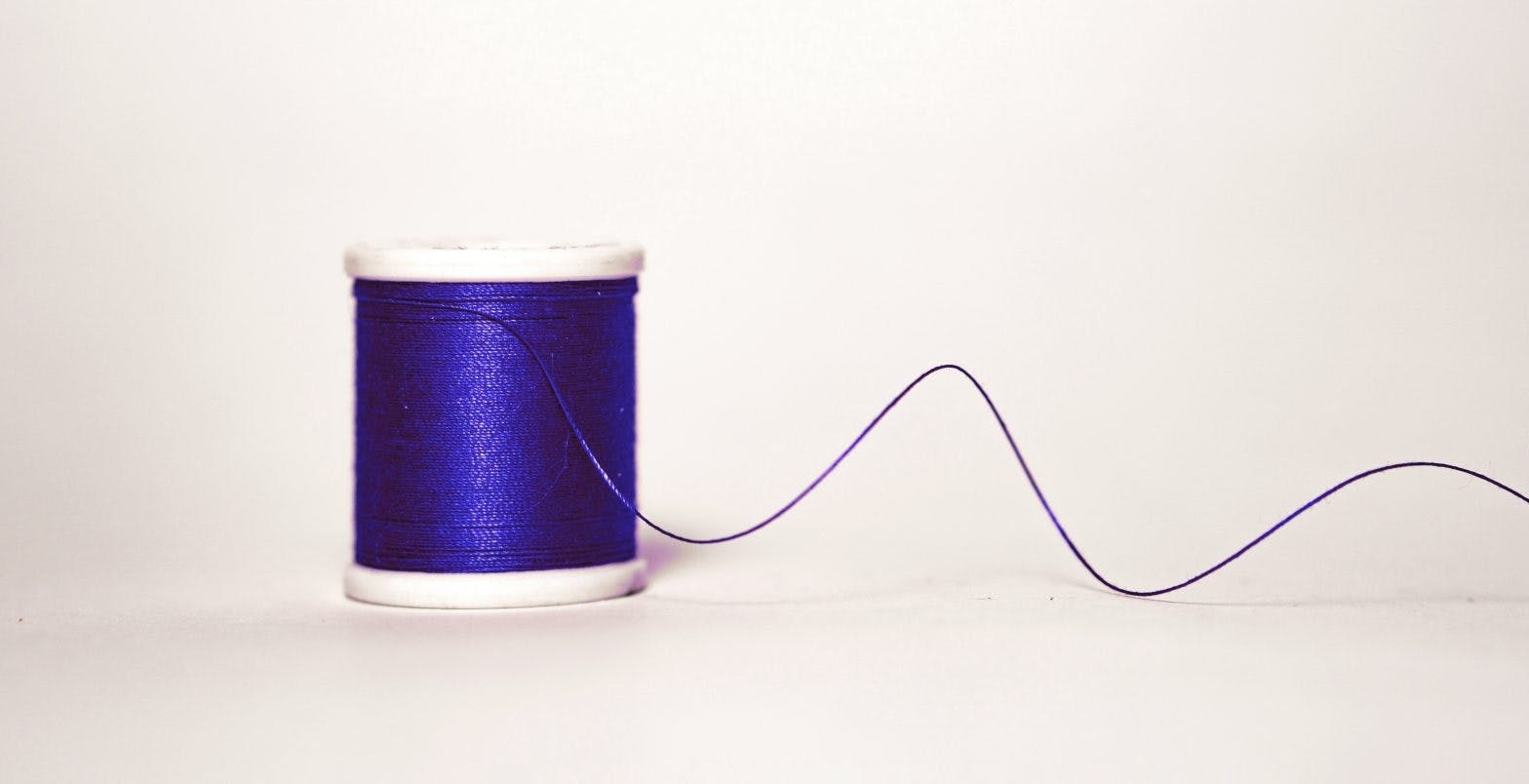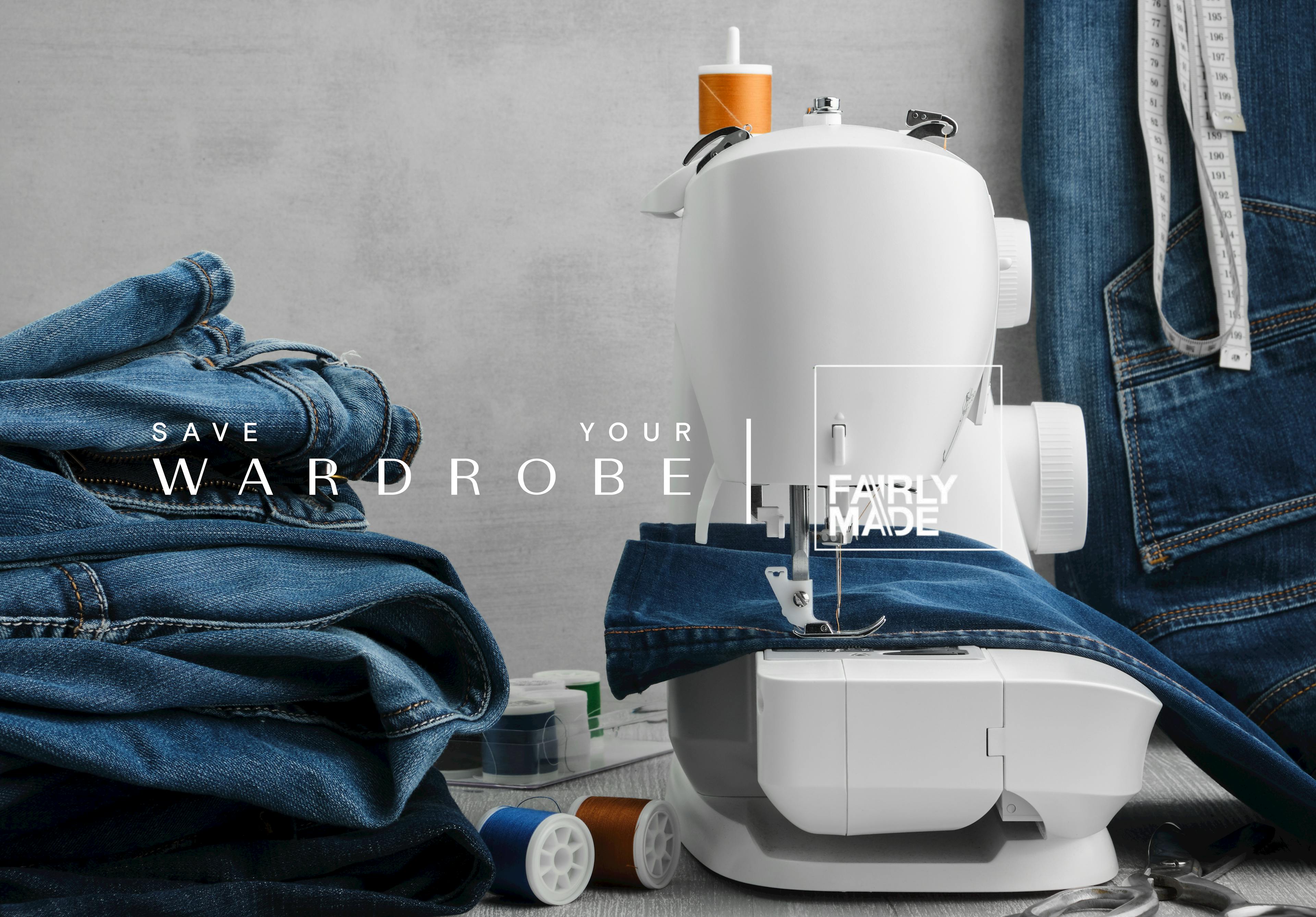
Decluttering your wardrobe sustainably: Tips and advice
There is a misconception that changing your lifestyle to be more sustainable is quick and easy. But when we realise that it can take more than a couple of days, and a couple of tries, it might feel discouraging and out of reach.
But don’t give up! There are many small steps that are easy to make and that will lead you in the right direction. Tackle one thing at a time, and give yourself space to find out what works for you. For example, when looking into making our wardrobe more durable and sustainable, decluttering our closet can be the first step. We only use about 20% of the clothes in our wardrobe regularly, so why not reduce the number of clothes we own and keep the things we really love, while giving the rest of our clothes a new life?
Making your wardrobe sustainable, and decluttering it responsibly can take many different forms. From taking care of the clothes you own and upcycling them, to selling, renting or lending the clothes you don’t wear as often… Here are some tips to help you get the best use out of your wardrobe.
MENDING AND UPCYCLING
Don’t wait to mend! Lily Fulop, also known as @mindful_mending on Instagram, gave us some insightful tips for mending your clothes. “A stitch in time saves nine” — literally! Mend something as soon as you see it, even if it’s just a tiny hole or a small fray. It’ll keep it from growing into a bigger problem later.”
And even if sewing isn’t really your thing, having visible mends on your garments is not an issue, “embrace visible mending— you don’t need to hide the imperfections in your clothes, you can highlight them!”. Whether it’s a patch of fabric on a top or an iron-on patch on your jeans, be proud of the clothes you’ve worn to bits.
You can also revamp clothes that you haven’t worn in a while or that have stains by embroidering them and reinventing them altogether. Lily told us that she believes that “there’s no one right way to do something— it’s just important that you do it!”. So grab your needle and thread!
Read the full interview here.
TAKING CARE OF YOUR CLOTHES
If you are not too keen on DIY or the clothes you want to repair are too far gone, or seem too complicated for you, a great option is to go to a tailor or to a platform that will alter, repair, refresh or clean your garments. It’s important that you take care of the clothes you decide to keep, to make sure they last as long as possible. Clothes Doctor and Blanc are two platforms that Save Your Wardrobe works with; a repair/tailoring platform, and a dry-cleaning company, respectfully. Using the right products on your clothes is essential to make them last longer.
Caring for your clothes is like caring for the planet. Blanc is one of the eco-friendly companies that offer environmental and human considerations in their services. They provide tailored dry-cleaning services to extend the lives of your garments.
Clothes Doctor is another service that takes care of your clothes. They specialize in repairs and tailors. They also sell care products for your wardrobe so that you can learn to take care of them properly at home.
Read more about alterations and dry-cleaning.
SWAPPING YOUR CLOTHES
If you start feeling bored of your clothes and feel as though you’d like to get a new look, buying new clothes isn’t always the best option. Buying retail creates a lot of waste, and ultimately creates another garment that will have to be discarded one day. Swapping and borrowing clothes from people you know or that feel the same as you is the best way. You can organise a clothes-swap with your family, friends or colleagues, and this ensures you that your clothes go to people you know and love.
A bonus point you get with clothing-swaps is that the clothes, having been worn and washed before, have already shrunk and stretched to the size they get to after buying them in retail – so no bad surprises about them! This is also an alternative if you prefer knowing who your clothes belonged to before.
CLOTHES RENTAL
Renting and lending your clothes is a great alternative to donating, selling, or buying clothes. If you own clothes that you haven’t worn in a while, but can’t seem to let go of, you should look into renting them out. Renting is a way to allow other people to enjoy the clothes you are not wearing anymore, without having to say goodbye to them forever. It allows you to make a little extra cash all the while helping the community stay sustainable, as the person that borrows from you does not have to buy a totally new garment in order to enjoy a new style – lessening their impact and waste.
If you have a date or an event for which you have no appropriate clothing, renting allows you to branch out of your fashion style, without needing to commit to a garment you would otherwise purchase and wear once or twice. By Rotation is a platform that lets you both rent other people’s clothes and put up your own for rent, for however long and for whichever price you think is reasonable. It’s easy and accessible to all.
SELLING YOUR CLOTHES
If you are indeed ready to let go of a piece of clothing, you can use a platform to sell it to people that want it. You can always sell it to people you know if they are interested, but otherwise, platforms like Depop make it easy to sell (and buy) used clothes. It is extremely flexible, and you get to fix the price you want for your garments. Like the clothes rental platforms, it creates a community of like-minded people that want to freshen their wardrobe without adding to the waste made by the industry.
DONATING RESPONSIBLY
Donating your clothes is also something you could consider. It might feel as though this is the easiest option, because it doesn’t always require an app or a platform, but it can be tricky to get right. Many of the clothes that are donated end up in landfills, or in textile manufactures. In these manufacturers, the textiles are turned into scraps that cannot be recycled. Even though it might seem like a good option, it’s important to know where and how to donate.
Thrift + is an online platform made for responsible donations. By donating your clothes to them, 30% of the resell value of the garment will go to the charity of your choice, which is more than any high street charity. It also makes the clothes available for anyone online, and you get to know when your clothes have been sold.
Donating is a great option, as long as you do it mindfully and responsibly. Don’t let the good intention of donating your clothes be ruffled by a somewhat flawed system.
Read more about responsible donations here.
BUYING RESPONSIBLY
Renewing the clothes in your wardrobes can be done without buying new clothes, as discussed above. But if you do want to buy new pieces, some platforms make it easy to buy sustainable clothing.
As seen previously, you can buy used clothes through Thrift +, or through Depop, which are sustainable options, as they are not directly linked to the fashion industry and the pollution it creates.
Another option is buying from sustainable and ethical sources. Springkode is a platform that sells unbranded clothes straight from the manufacturer. Not only do they use leftover fabrics, but it is 100% transparent and you know where your clothes actually come from. This upcycling platform is a way to buy clothes, without forgetting the human and environmental side of the fashion industry.
Read more about Upcycling here.
All in all, there are so many ways for you to sustainably declutter, revamp and renew your closet, and these platforms are here to help you. Decluttering your wardrobe responsibly will reduce your waste, but also the waste of the people who borrow, buy and wear your clothes after you. The sustainable fashion community is booming, and any little thing you can do will help. But remember, as Orsola De Castro once said, “the most sustainable clothes are the ones already in your wardrobe”.





